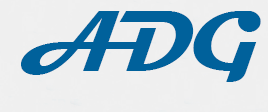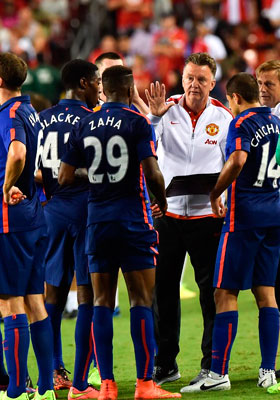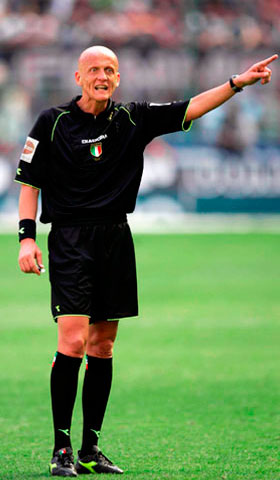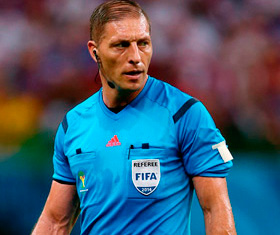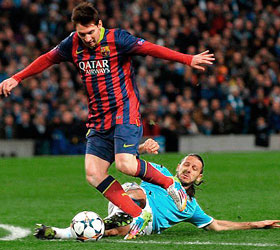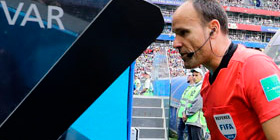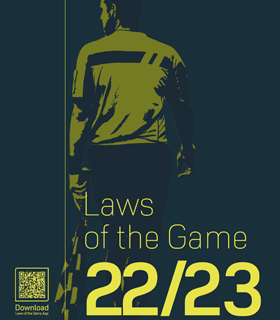
Aren't penalties just a simple and fair solution to a difficult problem?
Simple, yes. Fair, no. Professor Ignacio Palacios-Huerta in his book Beautiful Game Theory: How Soccer Can Help Economics, studied 1001 penalty shootouts comprising 10431 penalty kicks during a period from 1970-2013. It includes virtually all the shootouts in the history of the main international elimination tournaments such as the World Cup, European Championships and Copa América. The data set also includes club matches from the UEFA Champions League and Europa League, Spanish Cup, German Cup and English FA Cup.
What Palacios-Huerta discovered was that the team who took the first kick in the shootout won 60% of the time. 4 The reason is because the team kicking second is usually playing catch-up and therefore experiences greater pressure with each kick. So, the data clearly shows that the penalty shootout is not a 50-50 lottery. It is more like a 60-40 lottery, where the team kicking first has 20% more tickets! Read more.
IFAB have also rejected the ABBA kicking sequence which mirrors the tennis tie-break. However, ABBA was just putting a band-aid on a broken leg . It didn't address the penalty shootout's two other major problems – it doesn't showcase the game and it exposes players to psychological trauma, racism and death threats.
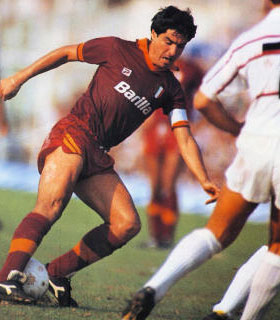
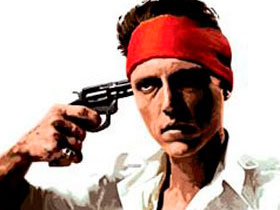
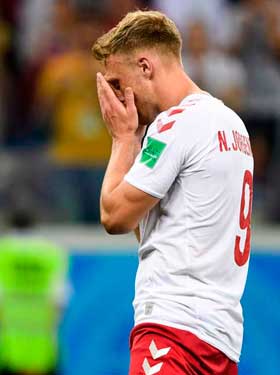

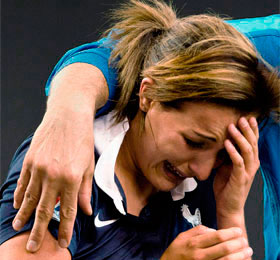

What psychological impact does the penalty shootout have on players?
Michel Platini was seemingly aware of the potential for long term psychological damage when he said, "A football match should be decided by an action of play. Not some contrived process whose end result is to mark a fine player such as Bossis, Baresi or Baggio for the rest of his career. Of course coaches like shootouts because they can say that defeat was not their fault. But the people who run the game should take the long-term view." 6
Platini subsequently became UEFA President and I wrote to him several times. And while I received feedback from the then technical director Andy Roxburgh, I was disappointed that someone with such close personal experience to the trauma of the penalty shootout, and someone who had also spoken so strongly against it, couldn't find time to respond.
Roberto Baggio who was instrumental in getting Italy to the final of the 1994 World Cup, but missed the decisive kick in the shootout says, "It affected me for years. It is the worst moment of my career. I still dream about it. If I could erase a moment, it would be that one." 7 Maxime Bossis, the French defender who missed the last penalty in the 1982 World Cup semi final says, "You know players miss penalties all the time, but you still feel guilty. I would rather we lost in extra-time. I've never taken another penalty since then." 8
Didier Six, who missed his kick in the same match, states explicitly how people's negative attitudes and prejudice can exaggerate the long term psychological damage that players often suffer. "At a certain point it gets too much. You are forty-five but people still see you as missing the penalty. I had difficulty finding a job because they said, 'That one is unstable.' And all that has come from this missed penalty kick." 8
Former England and Barcelona manager Terry Venables agrees. Venables says, "Penalties put too much strain on one player. It could ruin his career if he's not a strong character. If you feel for the rest of your life that everyone could of had a winners' medal but for you, it's a hard thing to get over." 6
The first penalty shootout in a European Cup final occurred in 1984 when Liverpool defeated A.S. Roma. The match is largely remembered for the antics of Liverpool goalkeeper Bruce Grobbelaar and his wobbling legs. Roma's favourite son, Bruno Conti, smashed the ball against the top of the crossbar and later described his missed penalty as "unspeakable pain" and said "my heart shrank to nothing and I was psychologically destroyed." 8
Roma's captain was Agostino di Bartolomei, who scored with his kick, but later suffered from clinical depression and committed suicide on the tenth anniversary of the game . It's a stark and tragic reminder that professional athletes are just as susceptible to mental illness as any other group in the community.
Does any other sport on the planet have such a self-destructive element as football's penalty shootout? And who will be the next player to be sacrificed? Imagine an icon of the sport like Messi, Ronaldo or Marta propelling their team to a World Cup final, only to miss the decisive kick in the penalty shootout. And what of the fourteen year-old boy or girl who misses the kick that loses their team the championship match? Do they continue playing football, or abandon it for another sport?
Perhaps, Christian Karembeu described it best when he equated the penalty shootout not with an old fashioned Wild West gunfight, but with a game of Russian roulette. "It is loading a bullet into the chamber of a gun and asking everyone to pull the trigger. Someone will get the bullet, you know that. And it will reduce them to nothing." 6
Some people will argue that the shootout simply parallels the ups and downs of real life. But the "two imposters" of triumph and disaster are already ever present within the regular ninety minutes. Indeed, it's common to see a player turn from villain to hero, or hero to villain, in the space of a few games or even a single match. If there's one thing football certainly doesn't need, it's a tie-breaker to remind us of the capriciousness of life.
Of course, today's players also have to endure all the scrutiny and vitriol from social media. Death threats were made against several players at the 2018 World Cup. 1 While three English players received racial abuse and a mural was vandalised after they missed penalties in the 2020 Euro final. 3 FIFA, IFAB and others need to act before there's a catastrophic tragedy.
How does ADG reduce trauma, racism and death threats? Isn't a missed goal in ADG going to have the same repercussions as during the shootout?
An average of 2.6 goals were scored per match at the 2018 FIFA World Cup. Football is the ultimate low scoring game. However, the shootout turns the game upside down and creates the expectation that the kicker will always score. The penalty shootout takes a positive natured sport and turns it into a competition where it's not the goals, but the missed goals, that invariably determine the winner.
Players measure themselves against their team-mates. If four of your team-mates convert penalties and your solitary miss loses the match, you're going to feel singularly responsible for the defeat. You're going to feel guilty about letting your team-mates and supporters down.
ADG's scoring rate is estimated at 20%, or three to four times lower than the shootout. So, the expectation from team-mates and fans is that you won't score. They hope you do, but they don't expect it. Now there may be more expectation on the gifted genius, or the speedy superstar who's great on the ball. If they score a scintillating goal, of course they're going to be a hero.
However, if they don't score, they won't be saddled with feelings of guilt and responsibility, because it's likely none of their team-mates scored either. And that’s how players ultimately measure themselves. They measure their own personal performance, against that of their team-mates.
A talented player who doesn't score in ADG may feel disappointment, but they won't experience the burden and trauma of knowing they lost the game. It's like the difference between watching a player miss a penalty kick during normal play and during the shootout. The player who misses during normal play is usually angry or disappointed with themselves. However, they don't appear as that desolate or inconsolable figure who knows that they've just cost their team the match or the championship.
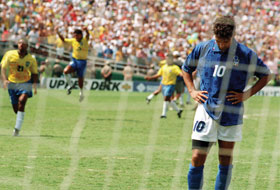
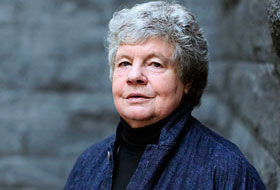
How often are shootouts occurring?
Since the 1982 FIFA World Cup, 20% of the elimination matches in the tournament have gone to penalties. So, if we project forward to the 2026 World Cup in North America, the 48 teams will be divided into 16 groups, each comprised of 3 teams. This means an additional 16 knock-out matches will be played during the Round of 32. Therefore, we can anticipate at least 6 penalty shootouts per tournament. That also means a massive increase in the amount of abuse, racism and psychological trauma that players will be subjected to.
What was the inspiration for ADG?
Everyone talks about the 1994 World Cup final and I also remember watching it and seeing what happened to Baggio. A.S. Byatt writes, "One does not remember the winners. One remains haunted by the losers." 9 So, I think I've had alternatives gestating for a long time. But it wasn't until I watched the 2008 UEFA Champions League final that I put pen to paper and began to flesh out an alternative.
What was the main idea behind ADG?
The underlying problem with the shootout is the expectation that the kicker should always score. So, I said, "How do we change that expectation?" It was then that I had the idea of including a defender. The challenge was then to develop that initial idea into a tie-breaker format that would combine the skill, speed and athleticism of modern football, with the inherent dramatic tension of the shootout.
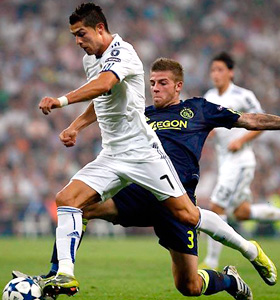
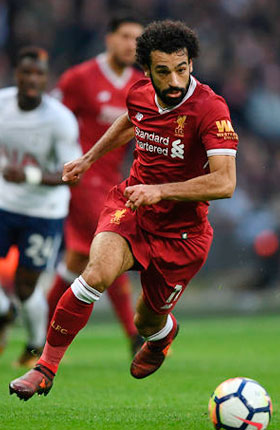
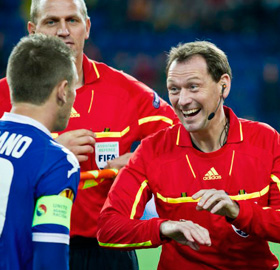
Briefly describe how ADG works?
The referee tosses a coin and the team that wins the toss, decides whether to attack or defend in the first contest. The teams receive an additional substitution. The referee meets separately with the teams and records their five attackers
 .
.
The attacker receives the ball at the ADG mark, which is 32 yards from the goal line. Having seen the attacker, the opposition field their defender. The defender and goalkeeper must be at least 10 yards from the ball until it is in play. See the diagram.
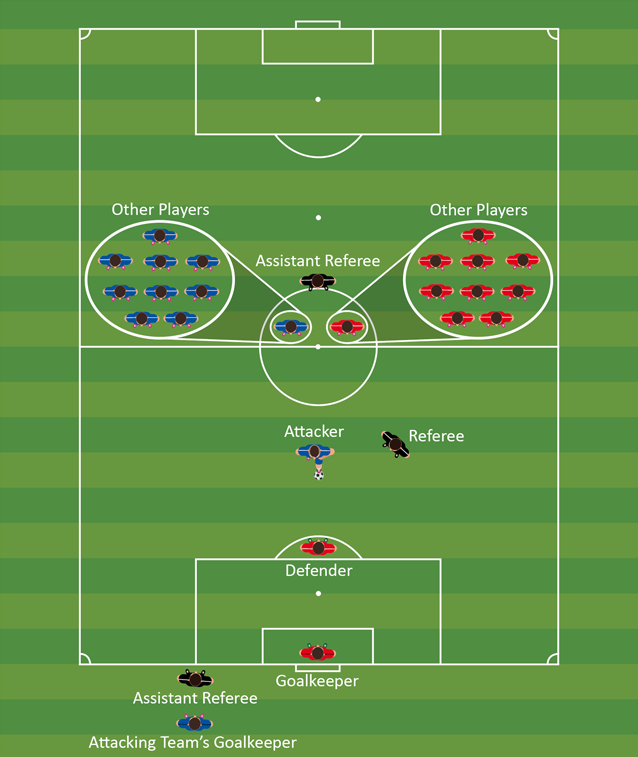
Half the field is in play. The attacker kicks off and has 20 seconds to try and score a goal. The contest will end if any of the following occur:
If the defender or goalkeeper commits a foul, the attacker is awarded a penalty kick and the 20 second time period is disregarded for the remainder of that contest.
Teams take turns attacking and defending. Teams play a total of ten ADG contests
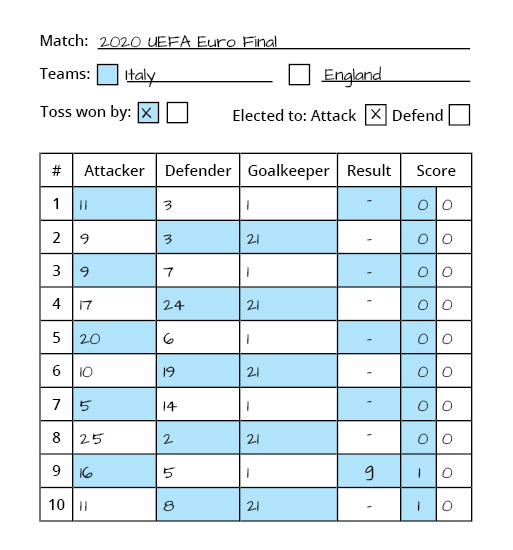 . At the completion of the contests, the team with the most goals is the winner. If scores remain level, the same players from the first contest will compete in the first sudden death contest.
. At the completion of the contests, the team with the most goals is the winner. If scores remain level, the same players from the first contest will compete in the first sudden death contest.
What advantages does ADG have over the penalty shootout?
ADG has seven fundamental advantages . It reduces psychological trauma, racism and death threats, because goals scored, rather than missed penalty kicks, determine the winner. It showcases skill, speed and athleticism. It removes the unfair advantage for the team kicking first. Coaching and strategy are vital. All players compete. It encourages fair play and attacking play during the match.

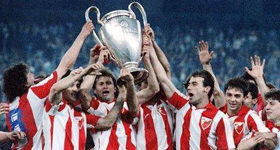

How does ADG encourage fair play during the match?
Unlike the penalty shootout, ADG forms part of the official match, so warnings and cautions are carried forward into ADG. Additionally, teams that have received red cards during normal play are at a significant disadvantage during ADG. This is much fairer for teams who have played within the laws and the spirit of the game.
Let's use the 2010 World Cup quarter-final between Uruguay and Ghana as an example. In the last minute of extra time a Uruguayan player deliberately handled the ball and denied Ghana a match winning goal. As we all now know, Ghana missed the penalty kick and went on to lose the shootout.
Once Ghana had missed the penalty kick, Uruguay were not subject to any further disadvantage for the remainder of the match. In fact, it doesn't matter how many players a team has had sent off, if they can make it through to the penalty shootout, then they are at no further disadvantage to their opponents.
However, if ADG rather than the shootout had ensued, Uruguay would have been without a defender for one of the contests. This gives the Ghanaians a distinct advantage, which is something most rational football fans around the world believed they were entitled to. So, ADG is much more effective than the penalty shootout at punishing teams who are guilty of unsporting and illegal play.
How does ADG encourage attacking play during the match?
Teams can't play for penalties , which is especially common when a team has had a player sent off. A coach will instruct all his eleven players to stay behind the ball, in hope they can jag a win in the penalty shootout. In ADG a team who has received a red card is a defender down, which means an opposition attacker will go one-on-one against their goalkeeper.
Now some people might suggest that teams could play for ADG, just like they do for penalties. However, if you were so confident in your team's superior football ability during ADG, why not just apply those skills to normal play and try and win the match in 90 minutes?
While Law 34
A defender or goalkeeper who commits an offence which denies the attacker an obvious goal-scoring opportunity, is not cautioned or sent off unless:
• The offence is holding, pulling or pushing, or there is no attempt to play the ball or challenge for the ball, in which case the player is cautioned.
• The offence is one which is always punishable by a yellow or red card. (e.g. reckless or excessive force challenge)
• The offence is handball, in which case the player is sent off.
is designed to minimise yellow and red cards, sanctionable offences are of course still more conceivable during ADG than the penalty shootout. As any additional sanctions will likely hinder teams as they progress through the elimination stages of tournaments,
there's additional incentive for teams to play attacking football and win the match before ADG.
ADG also encourages teams to keep creative attacking players on the field. In the 2006 World Cup final, the French replaced Ribéry and Henry after 100 and 107 minutes, respectively. Would these substitutions have occurred if ADG rather than penalties was imminent? Both are sublimely talented attacking players, who despite their genuine fatigue, would be invaluable for ADG. But their presence on the field for the duration of normal play, increases the chances of a French goal and the match being decided prior to ADG.
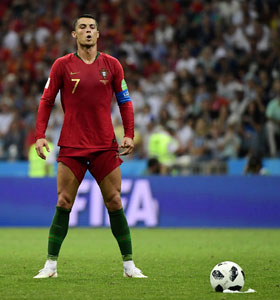
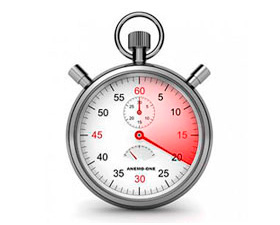
ADG was originally conceived with the attacker kicking off from the centre mark. This was to ensure that ADG wouldn’t require any extra markings on the field. However, expert feedback suggested that kicking off from the centre mark would present too significant a challenge for the attacker. The result being that less than 15% of contests would likely result in a goal.
For ADG to be effective as a tie-breaker, a scoring rate of 20% is required. This rate removes the expectation the attacker will always score, and also ensures that if ADG enters sudden death, the duration of the match won’t be unduly prolonged. Another reason 32 yards was selected is because the apex of the penalty arc is 10 yards from the ADG mark . So, it acts as a marker for the defender's position at kick-off.
The ADG mark also adds variability, with the potential to score directly from kick-off . Fans love a long-range free kick and this is another opportunity for them to see spectacular goals.
Why use the 20 second time period?
To avoid any sort of standoff between the attacker and defender. For example, the attacker trying to fake the defender into moving a certain direction. The 20 seconds provides a sense of urgency, but also allows ample time for attackers of all abilities and ages to progress towards goal and attempt a shot. Where a stadium has a clock visible to spectators, the 20 second countdown would be shown on the clock via a link to the referee’s watch.
What about goals right on 20 seconds?
In the event of a goal on the 20 second mark, the referees can receive an audible beep when the 20 seconds elapse. The assistant with their view along the goal line, is in the best position to adjudicate on exactly when the ball crosses the line. For major tournaments it would be logical to enhance goal line technology, so it can indicate if the ball crosses the line before the 20 seconds elapse.
How does a team determine who will be their attackers and defenders?
These decisions will obviously lie with the team's coach. At the end of normal play the coach will consult with his team and determine his five attackers and the order in which they will compete. As for the defenders, it's a case of anticipating who the opposition's attackers will be and selecting players to defend against them. For instance, in the 2006 FIFA World Cup final hypothetical , the French coach assumes Del Piero will be one of Italy's attackers, and instructs Sagnol to defend against him.
What are the differences between refereeing in ADG and normal play?
As the attacker competes against just a defender and goalkeeper, fouls will always be a denying an obvious goal-scoring opportunity (DOGSO) offence. However, as a foul on the attacker, regardless of whether it occurs inside or outside the penalty area, always results in a penalty kick (a very good opportunity to score), the goal-scoring opportunity lost by the offence is always restored.
So, to avoid an excessive number of sanctions, the DOGSO punishments during ADG are not as severe as during normal play. If it's a careless DOGSO offence, the defender or goalkeeper is not cautioned or sent off. While a DOGSO offence during ADG that involves holding, pulling or pushing, or no attempt to play the ball or challenge for the ball, receives a yellow card, instead of the normal red. Of course, reckless or excessive force challenges remain yellow and red card offences, respectively. Finally, a handball DOGSO remains a red card offence.
| Denying an Obvious Goal-Scoring Opportunity (DOGSO) | Sanction |
| Careless foul | None |
| Reckess foul | Yellow Card |
| Holding, pulling or pushing, or no attempt to play the ball or challenge for the ball |
Yellow Card |
| Excessive force foul | Red Card |
| Handball | Red Card |
What are the duties of the assistants?
One of the assistants is positioned in the disused half of the field and supervises the players who are currently not competing. The other assistant is positioned on the goal line and assists the referee with decisions in a similar way to an additional assistant referee. Both the referee and the goal lineassistant adjudicate on whether a ball is in or out of play. See the diagram.

Won't ADG put extra pressure on the referees and their assistants?
Any alternative to the penalty shootout that places the emphasis back on football skill, will inevitably put some pressure back on the referee. So, I doubt there would be anyone involved with refereeing who is eager to see the shootout replaced. In fact, it was actually a member of the FIFA Referees' Committee who submitted the penalty kick shootout as a replacement for the coin toss in 1970
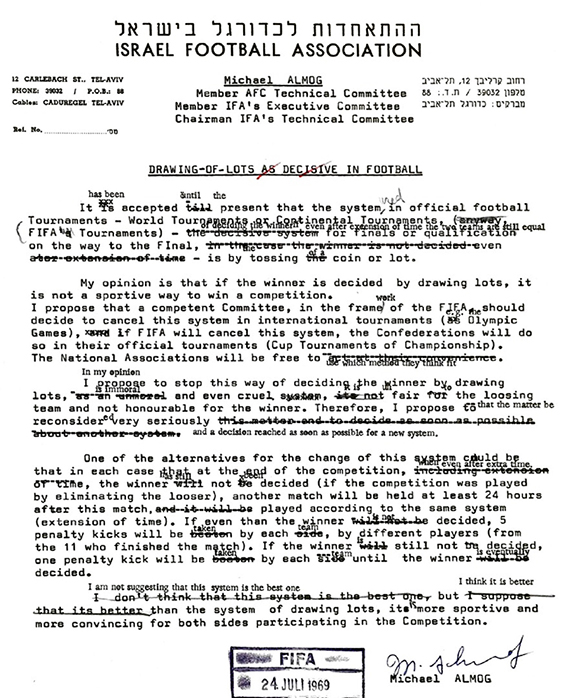 . And it's a tie-breaker format that makes it virtually impossible for the referee to make a mistake that influences the outcome of the match.
. And it's a tie-breaker format that makes it virtually impossible for the referee to make a mistake that influences the outcome of the match.
However, without the clutter of bodies hindering visibility and with the referee always in close proximity to the play, refereeing mistakes during ADG should be a rarity. And as the players currently not competing must remain within the disused half of the field, it's impossible for a group of players to surround and intimidate the referee.
Furthermore, two incidents that often result in contentious decisions, the offside law and whether a foul is committed inside or outside the penalty area, are not factors during ADG.
Another issue is when a goalkeeper moves off their goal line before the penalty is taken. Until recently, the Laws of the Game stated that the kick must be retaken and the goalkeeper cautioned. However, it's created so much recent controversy that IFAB were forced to modify the law. The goalkeeper will now receive a warning for the first offence, and only a second offence will result in a yellow card.
Indeed, the late great Johan Cruyff who played in the North American Soccer League (NASL) and experienced the 35 yard shootout said, "With penalties you've always got problems about whether the goalkeeper moved. You don't get this with the (NASL) shootout." 10 Likewise, in ADG a penalty only occurs when the attacker is fouled, so this problem will be much less frequent.
Finally, Video Assistant Referees (VAR) are helping referees with match-changing decisions. In fact, the natural stoppages within ADG ensure that VAR will be much less disruptive than during normal play.
| Refereeing Implications | ADG | Normal Play |
| Increased visibility | ✓ | ✕ |
| Referee always in close proximity to play | ✓ | ✕ |
| Mass confrontation avoided | ✓ | ✕ |
| Offside not applicable | ✓ | ✕ |
| Foul inside/outside Penalty Area not applicable | ✓ | ✕ |
| Minimise GK off goal line before PK | ✓ | ✕ |
| Natural stoppages make VAR less disruptive | ✓ | ✕ |
And aren't the costs of a slight increase in pressure on the referee outweighed by the benefits? Quite simply, what ADG will deliver is spectacular and exhilarating goals. It's due to the skill and grace of movement of the world's great players that we call football the "beautiful game" and the reason why it's the most popular sport on earth. It's also of course why Messi, Ronaldo and Marta are continuously rated as the world's best players. If you've got a great product, then as the marketing people say, "let the product speak for itself."
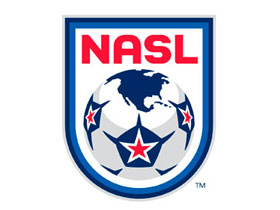
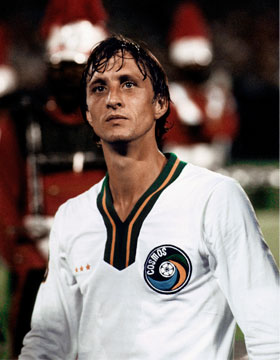

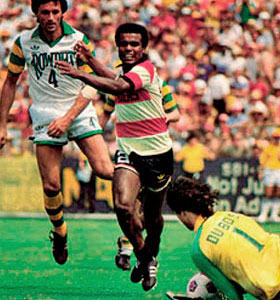
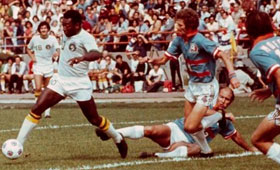
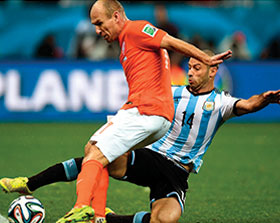
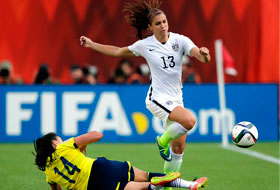
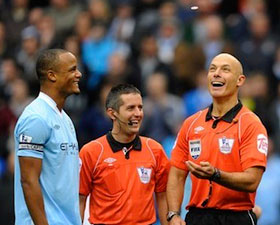
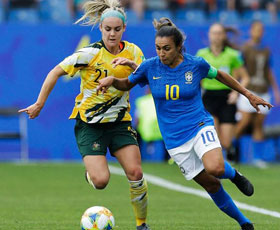
How is ADG different to other alternatives that have been tried?
Any successful alternative has to be about scoring goals. I was never a fan of ideas such as counting woodwork strikes, corners, cautions or any of the other things that have been suggested. Football is about scoring goals. We have to see the ball going into the net.
I think the Americans were on the right track with their NASL Shootout
• The visiting team takes the first kick.
• Each team is entitiled to at least five kicks, which are taken alternately.
• If, before the kicks are completed, one team has accumulated an insummountable number of goals - e.g., one team scores its first three while the other misses its first three - then the shootout is ended by the referee.
• If the number of goals scored by both teams is equal after five attempts, the procedure continues until one team has scored more than the other after both have taken part in an even number of kicks.
• Each kicker starts with the ball on the 35-yard-line, and must take his shot within five seconds after the referee's signal is given.
• The kicker and the goalkeeper are not restricted in their movement during the five-second period.
• Only players who are on the field of play at the end of the match may qualify to take kicks.
• No player may take a second kick until all eligible team-mates have had their turn. The order of a team's rotation may vary in each round of kicks.
which was later used in the MLS. The shootout started thirty-five yards from the goal and the player had 5 seconds to attempt a shot. Johan Cruyff said, "This is spectacular and not as brutal as penalties."
6
In a documentary in 2006 he said, "I still think in Europe they should try it."
11
Another recently departed legend of the game, Carlos Alberto, said in the same film that the NASL shootout "makes the game more emotional."
11
The dynamic nature of the American shootout rendered the penalty shootout as a static and clinical contest. MLS discarded their shootout in 1999, not because it was unpopular, but because they wanted "to bring the MLS game into accordance with how the game is played throughout the world." 12
Former USA goalkeeper, Winston DuBose says, "They (FIFA) wanted to whip America into line with the rest of the world. (The NASL shootout is) unbelievably exciting. Can you imagine Lionel Messi against Tim Howard, or something like that? It would be unbelievable to see that, fantastic. FIFA's extremely reluctant to change and it's crazy." 13
So, how does ADG compare? Well, the NASL shootout still only involves five attackers from each team. ADG of course involves every player, so it's a fairer test of a team's overall ability. ADG also showcases defensive skills. For example, you might see a defender make a perfectly timed sliding tackle to deny a shot on goal.
Another difference is that ADG provides a vital role for the coach, with strategy being a major factor. Furthermore, and similar to penalties, the NASL shootout doesn't disadvantage teams who have received yellow or red cards. So, another major distinction is that only ADG promotes fair play.
Some also people argued that the NASL shootout became too predictable, with the keeper always dashing to the edge of the penalty area. Including a defender and extending the time by 15 seconds, ensures unpredictable contests will unfold. Furthermore, in ADG the attacker also has the option to shoot directly from kick-off.
If the IFAB was to reconsider the NASL shootout, it would be a very hard sell. You’re bringing back a product that hasn’t been on the shelf in over 20 years. So, the critics will say, “If it was so good in the first place, why was it discontinued?” And for the record, ADG was not inspired by the NASL shootout and it was only after developing the ADG proposal that the author became aware of it.
| Feature | ADG | NASL |
| All players compete | ✓ | ✕ |
| Showcases defensive skills | ✓ | ✕ |
| Coach and strategy are vital | ✓ | ✕ |
| Promotes fair play | ✓ | ✕ |
| Unpredictable contests | ✓ | ✕ |
| Shoot from kick-off | ✓ | ✕ |
| New idea | ✓ | ✕ |
What about other alternatives?
One idea that's often discussed is having the penalty shootout take place before extra time. The team that wins the shootout takes a half goal advantage into extra time. The premise is that it forces the team that lost the shootout to attack in extra time. But it's also going to encourage the team with the advantage to sit back and try for a goal on the break. With modern teams so adept at counter-attacking football, the odds of them actually scoring another goal and totally shutting the game down will be very high.
With alternatives such as endless extra time, or the intermittent removal of players, there's always going to be the issue of excessively long matches and an increased likelihood of player injury. Not to mention the scheduling nightmare, because no one can guess how long these matches are going to last.
Compare this to ADG, which would be completed in about 10-15 minutes. It's also highly likely that if the above alternatives were introduced, supporters might miss the dramatic climax of the penalty shootout. The beauty of ADG is it combines the skill, speed and athleticism of modern football, with the climactic drama and tension of the shootout.
What will ADG's scoring rate be?
The scoring rate for penalties in the shootout for professional players since 1970 has been 73%. 5 While the rate for the 35 yard shootout in the NASL and MLS was about 33%. 13 Of course, competing against both a defender and a goalkeeper makes ADG more difficult. However, this is partially offset by increasing the time limit from 5 to 20 seconds. So, we can estimate that ADG's scoring rate will be approximately 20%.
How does ADG remove the 60/40 advantage for the team kicking first?
ADG's low scoring rate removes the expectation the player will always score. When the associated psychological pressure is removed, there won't be any advantage in attacking first in ADG. Which is in contrast to the massive advantage of winning the coin toss and electing to kick first during the penalty shootout.
Now some people assume that regardless of the actual scoring rate or the type of competition, going first in an ABAB sequence will always present some sort of advantage. For instance, serving first in the deciding set of a tennis match is generally acknowledged as an advantage. However, the actual statistics reveal that just as many players ultimately win the match when serving second in the final set. 14
If a foul receives a penalty kick, won't there be too many penalties and cards?
The rate for converting penalties during normal play is about 80%, which is even higher than during the shootout. As previously mentioned, ADG's scoring rate is estimated at 20%. So, if the defender commits a foul, it's three to four times more likely the attacker will score.
The defender has to treat the field of play as one big penalty area and be prudent when challenging the attacker for the ball.
This will result in a very limited number of penalties and sanctionable offences. And as per Law 34,
A defender or goalkeeper who commits an offence which denies the attacker an obvious goal-scoring opportunity, is not cautioned or sent off unless:
• The offence is holding, pulling or pushing, or there is no attempt to play the ball or challenge for the ball, in which case the player is cautioned.
• The offence is one which is always punishable by a yellow or red card. (e.g. reckless or excessive force challenge)
• The offence is handball, in which case the player is sent off.
a careless DOGSO offence is also not sanctioned.

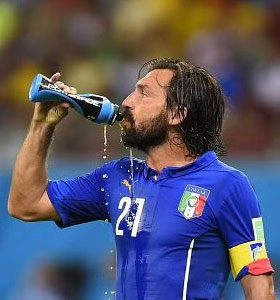
How does ADG deal with injuries and substitutions?
Newly introduced law changes allow teams at the 2022 FIFA World Cup to use up to a maximum of five substitutes per match, with a maximum of three substitution opportunities. The tournament also allows for a squad of twenty-six players, so up to fifteen substitutes can be nominated prior to the start of a match.
Now let's suppose that ADG is occurring instead of the penalty shootout. During ADG, as per Law 33 Teams receive an additional substitution and corresponding substitution opportunity. , each team is allocated an additional substitution. So, under the current laws, even if a team has already used its five substitutes, the coach will still have ten players available on the bench from which to select their ADG substitute.
What about injury concerns with players cooling down before ADG?
One criticism that ADG sometimes attracts, is that as players cool down they will inevitably suffer more injuries. But data collected by the English FA Medical Research Programme and published by the British Journal of Sports Medicine in 2003-2004 on the timing of hamstring 15 and ankle 16 strains contradicts this premise. A total of 91 football clubs from the English football leagues committed to the study which occurred over two seasons.
The research found that the two periods when players' core body temperatures are at their lowest levels, 17 namely the first 15 minutes of the match and the 15 minutes immediately following half time, actually contained the lowest number of injuries in both the studies. 15,16 In fact, almost half of the reported injuries occurred during the last 15 minutes of each half when body temperatures are actually at their highest. This data supports the notion that fatigue, rather than core body temperature, is the predisposing factor for these injuries.
Before the start of ADG there will be a five to ten minute period where the referee tosses the coin, coaches select players and discuss tactics, and the referee records the attacking players. This break will allow the players to rest, rehydrate and lessen fatigue.
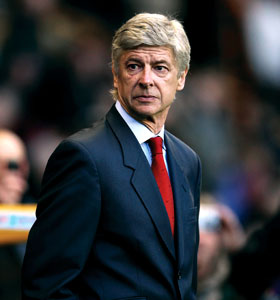
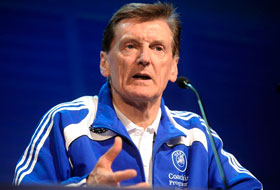
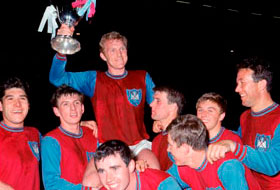
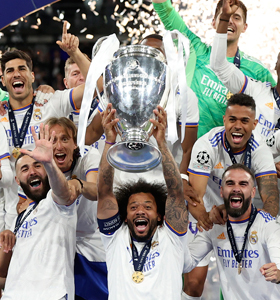
How would ADG integrate with the other tie-breaker procedures?
There are three procedures to determine the result of a match or a home-and-away: away goals, extra time and kicks from the penalty mark. ADG could be a fourth procedure and tournaments could then choose between the shootout and ADG. While tournaments could opt to play away goals and/or extra time and then ADG, the author believes that 90 minutes of normal play followed directly by ADG will be the optimal format.
In recent years a lot of debate has surrounded the away goals rule. "I believe the tactical weight of the away goal has become too important," says Arsène Wenger. "Teams get a 0-0 draw at home and they're happy. Instead of having a positive effect it has been pushed too far tactically in the modern game. It has the opposite effect than it was supposed to have at the start. It favours defending well when you play at home." 18
"It was an artificial regulation brought in to avoid a third match", says former UEFA and current AFC technical director Andy Roxburgh. "It was to encourage elite teams to attack. What actually happens is that it works the other way around. It's encouraged home teams to defend. It gives certain goals an added value and you can argue that's artificial. It encourages caution that wouldn't be there if you removed it. It was introduced for the right reasons but it's time to look at it." 19
Jonathan Wilson writes, "The away goals rule first made an appearance in European football in the Cup Winners' Cup in 1965, primarily to eliminate the need for replays, which were costly and difficult to arrange. Given the alternative was flipping a coin, it probably seemed the lesser of two evils and, besides, back then it made a certain sense. Only 16% of all European away games then resulted in an away win. Away trips were difficult as travel was gruelling and away teams would often face unfamiliar and hostile conditions. As a consequence, the tendency was for the away side to absorb pressure and try to keep the score down." 18
"But circumstances have changed. In each of the last five years, between 30 and 35% of matches in European competition have been won by the away side. Even if you wanted to make the argument that the away goals rule has worked, the original rationale for its introduction has gone. Transport is better now and there is a great homogeneity of conditions. While the differences between a German side and a Spanish side, or a Russian side and a French side, are far less than they were. Teams are cosmopolitan, national styles less distinct than they once were. Away trips simply aren't as frightening as they once were and so the away goal becomes a weird distorter." 18
In 2021 UEFA announced the abolition of the away goals rule in all club competitions.
What about extra time and the chance of excessively long matches?
While penalties often conclude within 5-10 minutes, ADG will take about 15 minutes. In a similar fashion to the relevance of away goals, there's also been debate about the value of extra time in an era of high-tempo and pressing football. During the 2018 FIFA World Cup, Croatia played extra time on three occasions. So, by the time they reached the final they had effectively played an additional match. The Croatian team's fatigue in the second half of the final, spoiled what would have been a much more competitive match.
Of the last 13 UEFA Champions League finals to go into extra time, 11 have ended without a single goal during the added 30 minutes. So, if we combine the lack of goals with professional players' increasing schedules and the dwindling attention spans of global sporting audiences, then the value of extra time in modern football is certainly debatable.
Tournaments such as the Copa América and Copa Libertadores have already eliminated extra time, with all knockout matches except finals, going straight into the shootout. So, for those tournaments selecting ADG, the choice remains whether to play away goals and/or extra time, or simply play ADG after 90 minutes.
Why not keep football a simple game?
The phrase "a simple game" dates back to 1862 when a teacher at Uppingham School in England drew up a set of ten laws entitled "The Simplest Game". These ten laws which are also known as the Uppingham Rules totalled a mere 253 words. 20 By contrast, the word count for the 17 laws in the current edition of IFAB's Laws of the Game is over 16,000.
What was indeed once "a simple game" has morphed into a sophisticated sport where players, coaches and referees dedicate decades to perfecting their skills. Over the past 150 years the Laws of the Game have expanded exponentially and the sport has undergone many transformations. Consequently, the idea of football being "a simple game" is an anachronism.
So, while some might complain that ADG is too complicated, we must also acknowledge that the sport’s rulebook spans 230 pages. In fact, the word count for the thirty-five ADG laws is actually less than that for the penalty shootout! Regardless, many concepts which are highly detailed and ostensibly complicated on paper, become deceptively simple when they are physically played out and people can visualise them. This will be the case with ADG.
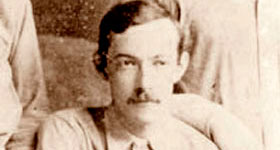
The penalty kick itself has been around for over 100 years, isn't that justification for the shootout?
The late broadcaster and FIFA Ethics committee member, Les Murray writes, "To begin with penalty kicks were invented as tools of punishment for offences. It is inherently abhorrent that tools of punishment should be used to decide games. Proponents of shootouts make the case that penalties are part of football. Yes. But only when someone has committed a foul inside the penalty area. As genuine, intended arbiters of a game's outcome, they are not part of the game and never have been. The men who drew up the Laws of the Game at London's Freemasons Arms all those years ago would be spinning in their graves at the thought that penalties are now deciding World Cup finals. " 21

Isn't ADG just a gimmick and not real football?
We're all scared of change but we also know that the shootout is an unsatisfactory solution and that's why we've seen things like golden goal and silver goal. And while these experiments were ultimately deemed unsuccessful, this should in no way hinder or disqualify the development of other new alternatives. I know people will say that ADG isn't real football and contrary to the Laws of the Game, but I will always argue that ADG is more about the purity of football and the dynamic beauty of the game than the penalty shootout will ever be.
Of course, ADG is a bold alternative. But the very nature of a diabolical problem necessitates creative thinking, innovation and evolution. Most elements of the game such as pitch quality, stadium design, real-time statistics, kit, crowd control, safety, and most recently, refereeing technology, have evolved since the seventies. But the game’s ultimate tie-breaker remains a relic from a bygone era. Football must continue to evolve if it’s to preserve its place as the most loved sport in the world. ADG should be viewed as another step forward in this evolutionary process.
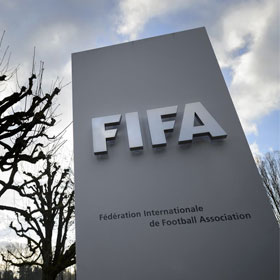
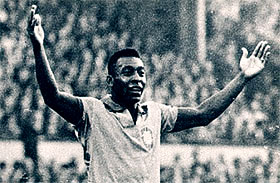
What’s the future hold for ADG?
You often hear people say, don't fix what's not broken. However, FIFA acknowledge the problem and that's why we saw golden goal and why other alternatives are always discussed. Even Sepp Blatter, for all his faults, declared the shootout a tragedy and in 2012 asked Franz Beckenbauer to come up with an alternative. Beckenbauer said something about them being better than the coin toss, and that was it! So, regrettably there's an astonishing amount of arrogance and wilful neglect exhibited by the sport's law makers and administrators.
ADG was discussed by the IFAB in 2009 when the proposal was then just weeks old. In the ensuing years the proposal has been radically improved. Subsequently, IFAB acknowledged the 20% advantage for the team kicking first and ABBA was trialled. We’ve also witnessed the global sporting community’s growing recognition of their responsibility towards athlete’s mental health. However, football remains oblivious to the dangers, with the penalty shootout continuing to promote psychological trauma, racism and death threats. It’s a cancer on the sport and a black mark against FIFA, IFAB, FIFPRO and every football administrator.
I've tried to develop a thorough proposal and anticipate likely problems, but as with any proposed alternative, only practical testing will reveal its actual strengths and flaws. It's then of course a matter of getting feedback from the game's stakeholders such as players, fans, coaches and managers, referees, sponsors and administrators.
When the shootout was introduced in 1970, football was a very different game. Four years earlier Pelé was literally kicked out of the World Cup and even considered quitting the sport. Five decades later and the game deserves a tie-breaker that rewards and showcases the modern footballer for their immense skill and athleticism. Things have to change soon, otherwise as Karembeu says, "Someone will get the bullet, you know that. And it will reduce them to nothing."
"Every manager would like to see a match decided in 90 minutes.
Because I don't think there's any way you can prepare for penalty kicks."
